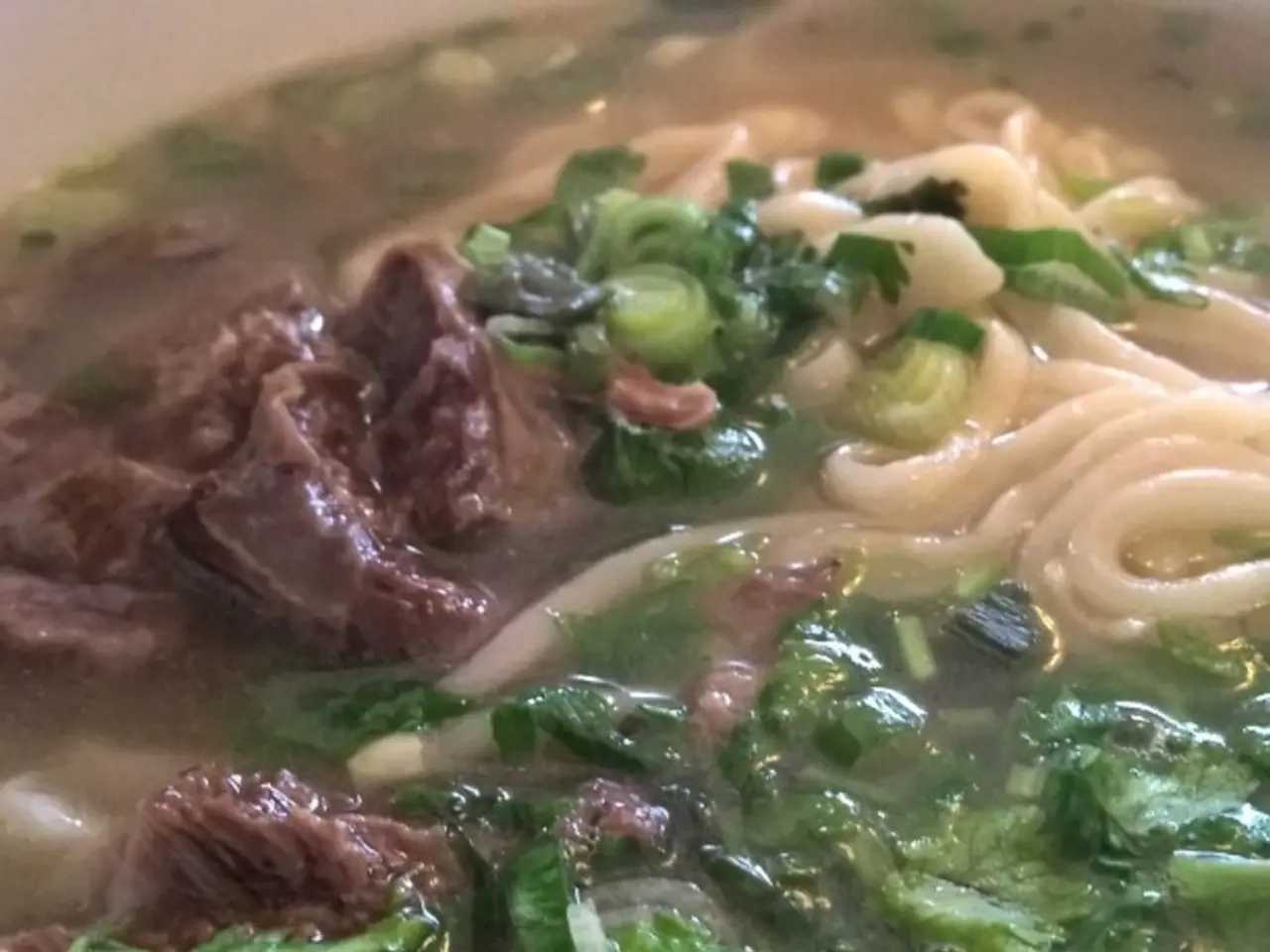Rediscovering the authentic flavors of traditional and homemade Quebec cooking
In the heart of Canada, Quebec boasts a culinary heritage that is as rich and diverse as its landscape. From the bustling cities to the serene countryside, the province offers a gastronomic journey that delves deep into its history and culture.
One memorable recipe that hails from the Saguenay region is salmon poached in milk, seasoned with flour and sea parsley, a dish from the picturesque town of Sainte-Rose-du-Nord. Another traditional favourite, the quiaude, is a fish or clam soup cooked with milk, potatoes, and herbs, a testament to the province's unique approach to seafood.
The quiaude has its roots in the Gulf of St. Lawrence, where cod was once abundant. The term "chiaude" or "quiaude" refers to this hearty soup that has been a staple in Quebec's culinary tradition.
In the early days of New France, artisanal pasta was a common sight, with different names such as catalognes in the Charlevoix region, rallonges in the Outaouais region, and pasta rice in Saguenay-Lac-Saint-Jean. The English introduced the term "macaroni" for spoon-sized patties of pasta dough, which were often added to stews or syrup.
For those seeking local produce, paying less often requires going directly to the producers, even if it means a trip to the countryside. Freshwater fish like pike, trout, walleye, muskellunge, catfish, were once common in Quebec's daily diet but are now less prevalent. To find these local delicacies, one should visit fishmongers or place orders with them.
Soup has played a dominant role in Quebec's culinary history. From the Lambert soup, a broth made from a piece of beef, believed to have originated from the Lanaudière region, to the typical sunflower seed soup of Saguenay-Lac-Saint-Jean, these comforting bowls of warmth are a testament to the province's love for this humble dish.
In the early 20th century, a train carried a daily cargo of fresh fish from the St. Lawrence River to various cities. However, today, these freshwater fish are not commonly found in large grocery stores like IGA or Metro due to their preference for dealing with large suppliers.
Preservation methods used by ancestors and indigenous people in Quebec include salting, pickling, drying, smoking, and freezing. These techniques are still employed today, ensuring that the flavours of the past are preserved for future generations.
In recent years, there has been a growing interest among young people in local cuisine and its history. Michel Lambert, an expert on the history of Quebec family cuisine, has published several books on the subject, including "Die Erdbeeren der Estrie - Von den Wurzeln des Kochbuchs zur Gastronomie der Region" with Elisabeth Cardin.
Once a form of currency in New France, eel was highly prized but its stocks declined in the 1960s. Despite this, eel remains highly prized in Asia and Germany. Crustaceans like shrimp, lobster, and scallops were once considered poor people's food in Gaspésie.
In winter, eating fresh local produce in Quebec can be challenging and expensive due to the need to transport them from other regions. However, innovations like Toundra Greenhouses in Normandin, which recovers heat from a wood processing plant to grow cucumbers year-round, are helping to bridge this gap.
From the rich history of local cuisine to the innovative solutions being implemented today, Quebec's culinary landscape is a testament to the province's resilience and its commitment to preserving its unique flavours.




